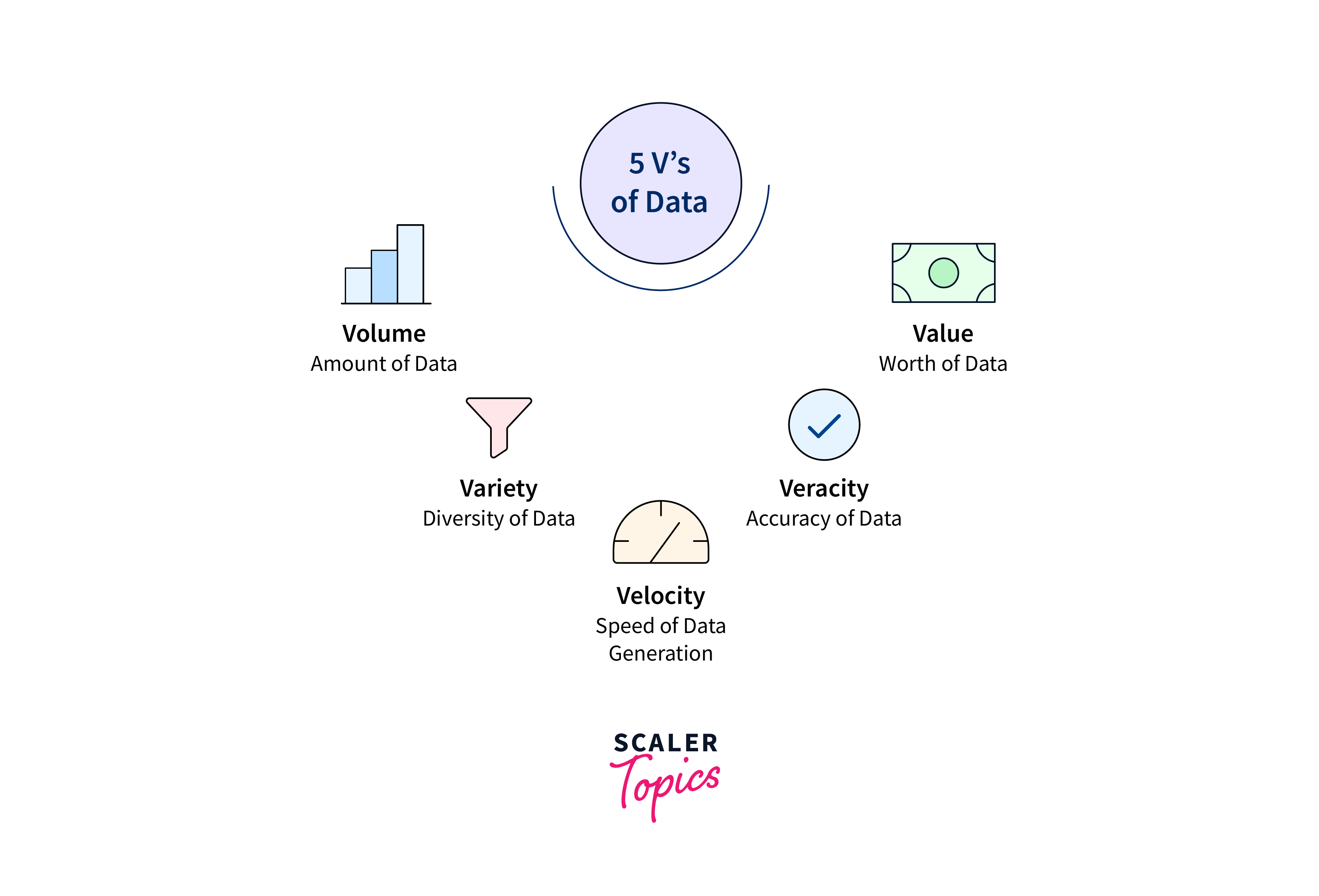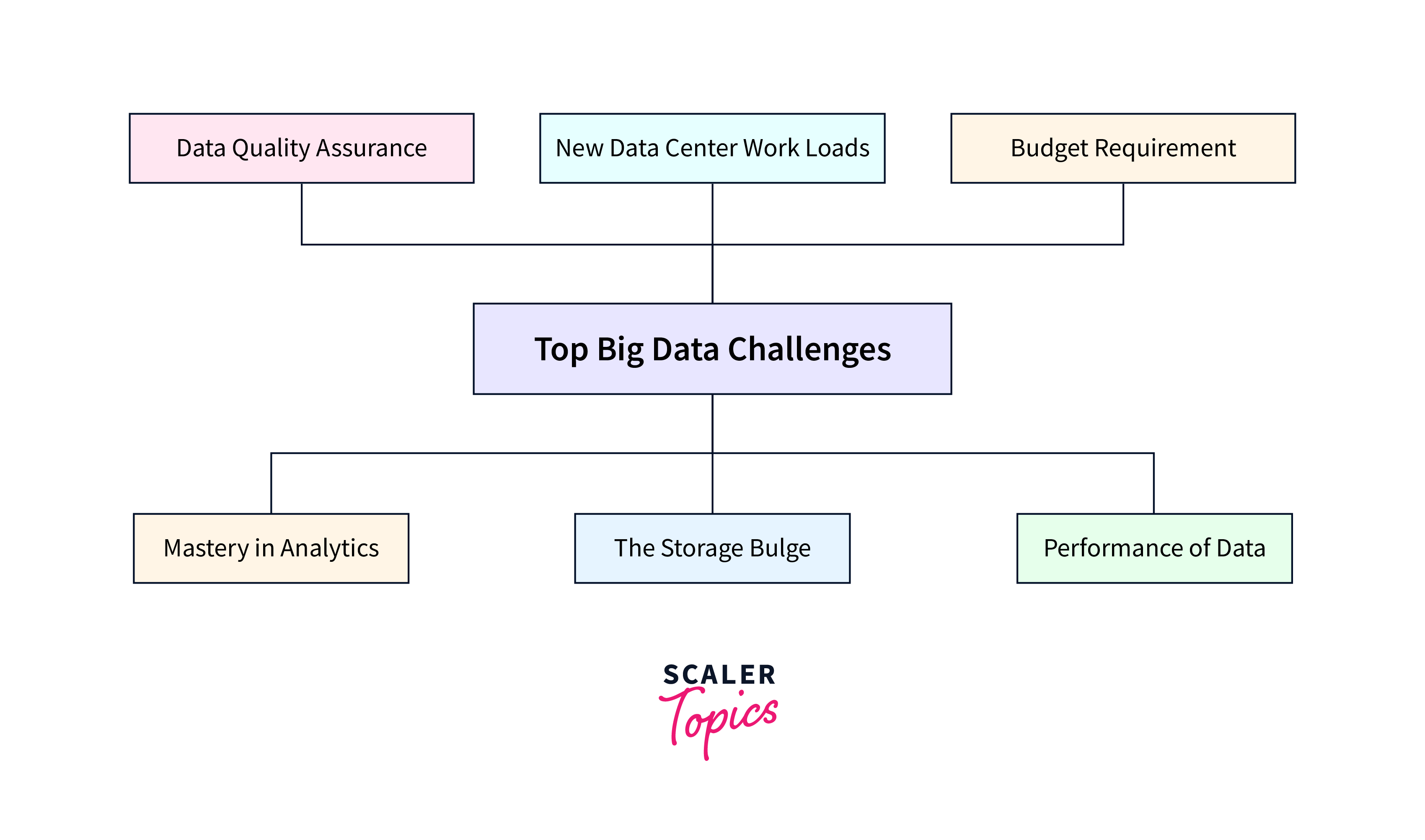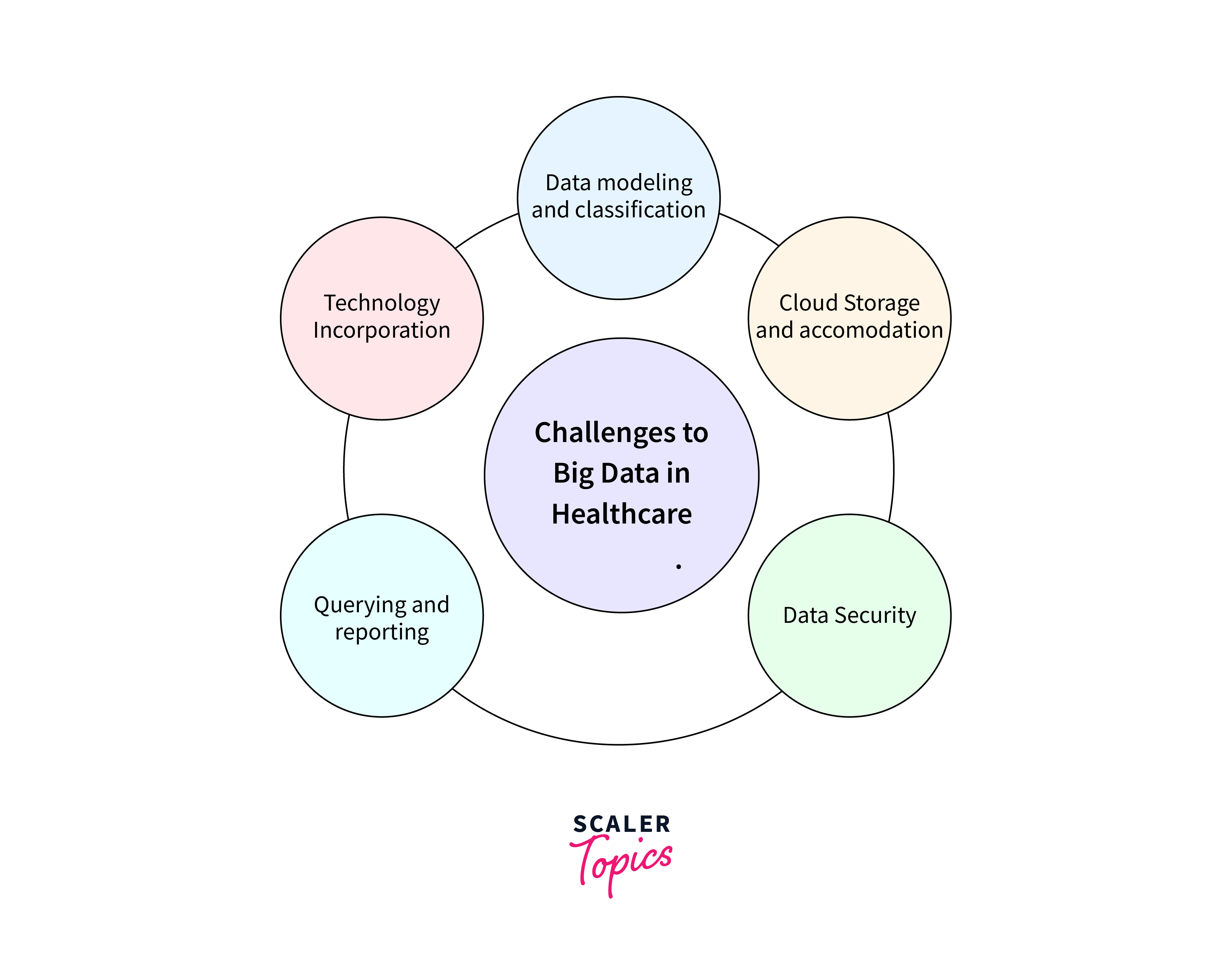Top 6 Challenges of Big Data
Overview
In today's digital world, information acts as the source of hidden potential insights for business development and the concept of Big Data has brought both major opportunities and formidable challenges. The generation and accumulation of vast amounts of information have given rise to what we now know as Big Data. In this article, we explore the challenges of big data.
What is Big Data?
Big Data refers to massive volumes of data produced by various sources, including customer data, social media, scientific research, and more. It comprises structured data, like transaction records and databases, as well as unstructured data, such as social media posts, images, and sensor readings. The significance of big data lies in the potential insights and knowledge it holds, driving decision-making, innovation, and progress across industries and sectors. Learn more about What is Big Data.
Five V's of Big Data
The concept of Big Data is often summarized by the Five V's: Volume, Velocity, Variety, Veracity, and Value.

Each "V" highlights a crucial aspect of the challenges posed by Big Data:
- Volume: The volume of data being generated is huge and overwhelming.
- Velocity: Data is generated and collected at unprecedented speeds.
- Variety: Big Data comes in various formats – structured, semi-structured, and unstructured.
- Veracity: The factor related to the accuracy and trustworthiness of data.
- Value: Valuable insights that could be extracted from Big Data.
To Learn more Read The 5 V's of Big Data.
Top Challenges of Big Data and How to Solve them?
Let us explore the different challenges of big data and the strategies to navigate them effectively.

Data Management and Storage
- Protecting huge volume of data generated daily from unauthorized access and ensuring data redundancy for reliability while minimizing storage redundancy is one of the major challenges of big data.
- Rapid data retrieval and access for real-time analytics with efficient storage and data compression techniques without compromising data integrity requiring optimized storage architectures.
Solution:
Implementing scalable and distributed storage solutions like Hadoop Distributed File System (HDFS) and cloud-based storage. Implement data compression and archiving techniques to optimize storage space. Employ data lifecycle management strategies to prioritize and manage data efficiently.
Data Quality and Veracity
- Inaccurate or incomplete data can introduce noise and erroneous insights.
- Maintaining consistent formats and standards across diverse data sets is yet another one of the major challenges of big data.
- Integrating data from different sources.
- Establishing robust data governance practices to ensure data quality
Solution:
Invest in data quality tools and data cleansing processes to identify and rectify errors. Establish data governance practices and implement data validation techniques at the source. Conduct regular data audits to maintain data accuracy over time.
Data Privacy and Security
When it comes to analysing or handling big data, security becomes crucial due to the following reasons:
- Managing access permissions preventing data breaches from within the organization and implementing robust encryption techniques for data at rest and in transit.
- Complying with data protection principles, such as GDPR or HIPAA while managing user consent for data collection and usage is also one of the major challenges of big data.
Solution:
Implement robust encryption protocols for data at rest and during transmission. Ensure compliance with data privacy regulations like GDPR and HIPAA, and regularly perform security assessments to find potential vulnerabilities. Train employees to understand the importanceof cybersecurity in work environment.
Scalability
Scalability in big data analytics architectures is challenging due to the following reasons:
- Coordinating distributed computing resources to handle large-scale data processing while maintaining performance and ensuring fault tolerance in systems is one of the major challenges of big data.
- Dividing data into manageable partitions for distributed processing while maintaining data integrity and minimising latency.
Solution: Utilize cloud computing for elastic scalability and technologies like containerization and microservices architecture to build scalable applications. Implement load balancing and resource management techniques to ensure optimal performance during peak loads.
Data Integration
- Integrating data from varied sources with different formats, structures, and semantics poses a significant challenge.
- Mapping and transforming data schemas to ensure compatibility and consistency is a complex process.
- Ensuring consistent and accurate source data across integrated systems requires meticulous management.
- Handling changes to data sources and structures without disrupting ongoing data integration processes is critical and is one of the major challenges of big data.
Solution:
Implement data integration platforms and ETL (Extract, Transform, Load) processes to streamline data integration. Utilize data integration tools that support various data formats and protocols. Develop standardized data models and schemas to facilitate seamless integration.
Analytics and Insights
Achieving insights from big data has the following challenges:
- Advanced analytical techniques and algorithms for navigating through big data to identify meaningful insights, while ensuring statistical validity of such insights.
- Real-time analytics for presenting complex insights in a clear visual format on streaming data requires specialized tools and technologies is one of the major challenges of big data.
Solution:
Invest in data analytics platforms and tools that support advanced analytics, machine learning, and AI. Train and upskill data analysts and data scientists to effectively analyze and interpret complex data sets. Create a data-driven culture that encourages data exploration and experimentation.
Big Data Case Study
Netflix:
Netflix stands as a prime example of utilizing data analytics to enhance user experience and drive business growth. With an expansive library of movies and TV shows, Netflix faced the challenge of helping users discover content aligned with their preferences. Netflix leveraged the user data it collected, including viewing history, ratings, searches, and interactions, to build a sophisticated recommendation algorithm with the following features,
- Collaborative Filtering: To identify users with similar viewing habits. By analyzing shared preferences, the system suggests content based on what similar users enjoyed.
- Content Analysis: The platform examined metadata, genres, directors, and actors to identify commonalities in content. This enabled Netflix to recommend shows and movies that align with users' interests.
- Real-time Data: The recommendation engine continuously adapts to changing user behaviour, incorporating real-time data to provide up-to-date suggestions.

With this data analytics algorithm, Netflix's personalized recommendation engine revolutionized the streaming experience.
Amazon
Amazon, the global e-commerce giant, is renowned for its effective use of Big Data to optimize pricing strategies and enhance customer experiences. With millions of products, Amazon faced the challenge of setting prices that were both competitive and profitable.
- Real-time Data Processing: Amazon's algorithms process real-time data to adjust prices instantly based on factors such as demand spikes, competitor price changes, and inventory levels.
- Machine Learning Algorithms: Advanced machine learning models predict customer behavior and price elasticity, enabling Amazon to optimize prices for maximum sales and profit.
- Segmented Pricing: Amazon tailors prices based on customer-optimizing discounts, promotions, and pricing tiers for different demographics.
Amazon's dynamic pricing strategy revolutionized e-commerce by enabling the company to react to market changes and customer preferences. This approach boosted revenue, increased competitiveness, and solidified Amazon's position as an industry leader.
Big Data Analytics Challenges in Different Industries
Healthcare Industry:

- Integrating data from diverse healthcare devices like wearable to create a comprehensive patient profile for processing real-time patient data to monitor health conditions and trigger alerts.
- Safeguarding sensitive patient information while ensuring accuracy, completeness and data access for analysis of medical data sources.
- Utilizing Big Data analytics to accelerate drug discovery, clinical trials, and research for improved medical treatments.
Solutions:
Implementing data-sharing platforms to enhance interoperability, while employing data validation and cleansing techniques to maintain data quality. Using blockchain for secure and transparent patient data sharing and implementing strict access controls and encryption protocols to maintain privacy over patient data.
Security Management Industry:

- Analyzing diverse security data sources, including logs, network traffic, and user behaviour, for threat detection.
- Processing and analyzing data in real-time to identify and respond to security threats promptly.
- Dealing with a high volume of false positive alerts, leading to alert fatigue and resource wastage.
Solutions:
Implementing machine learning algorithms to identify patterns and anomalies indicative of potential threats. Utilizing SIEM systems and real-time data streaming platforms for rapid analysis and response to security events.
Conclusion
- Big Data refers to vast volumes of data generated from various sources, encompassing structured and unstructured information.
- The Five V's of Big Data are Volume, Velocity, Variety, Veracity, and Value.
- Addressing data management, data quality, privacy, scalability, integration, analytics, and regulatory concerns are crucial for Big Data success.
- Implementing scalable storage, data validation, encryption, cloud solutions, advanced analytics, and data governance can overcome Big Data challenges.
